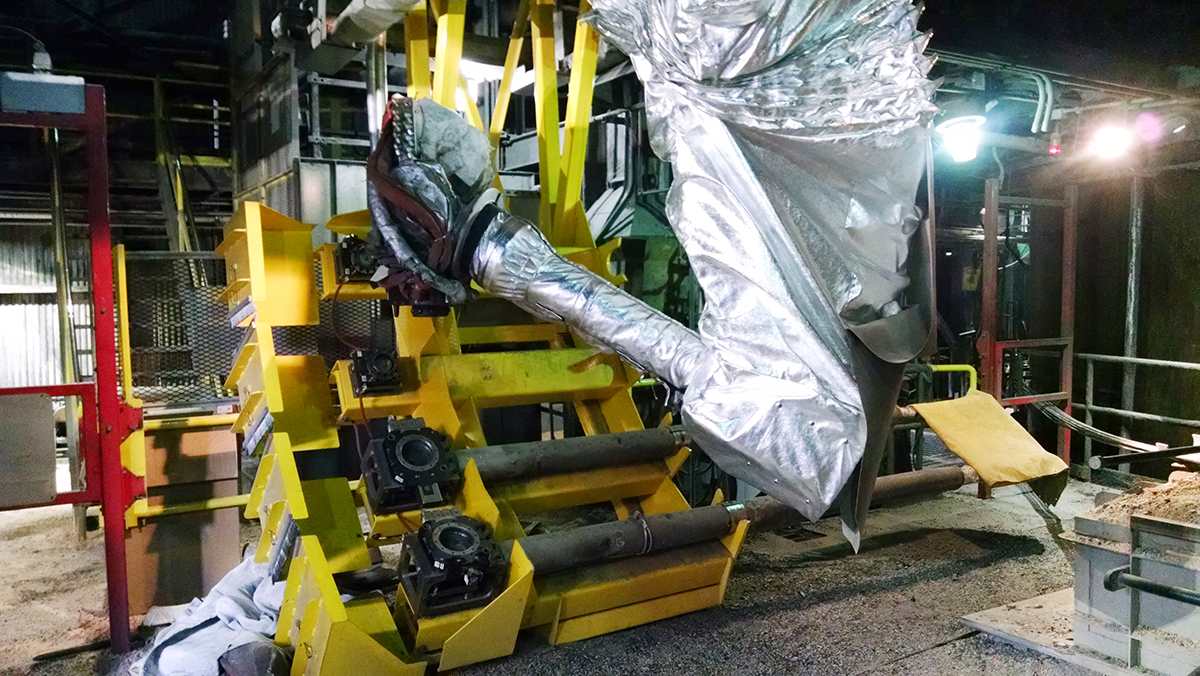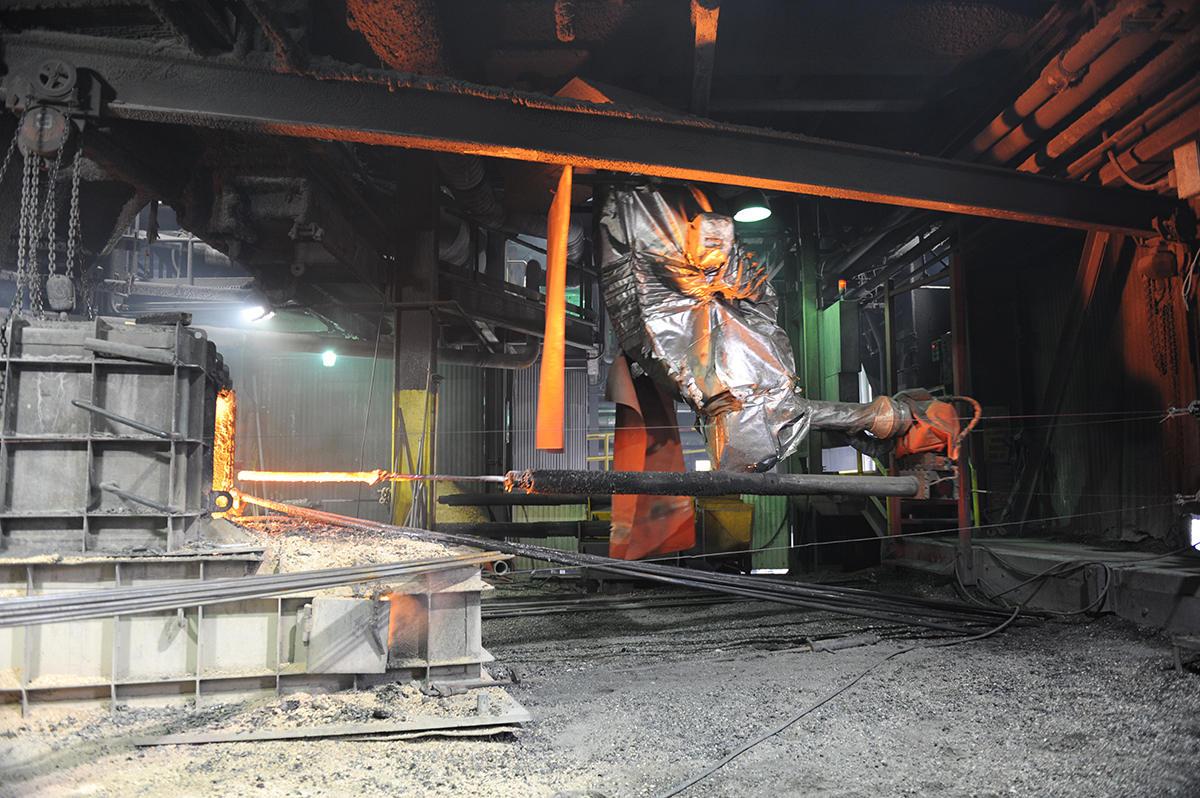OVERVIEW:
Project Goal: Shield robotic equipment from constant radiant heat and slag
Protection Parameters: Extreme temperature environment from electric arc furnace
Facility Type: Indoor factory
Companies Involved: Bayer Crop Science, Roboworld
History of Use: 10+ years
Background:
Bayer Crop Science uses innovative research and technologies to unlock solutions that shape the future of agriculture. From planning to harvest, Bayer strives to offer farmers solutions that help them make better agronomic decisions.

One of those solutions is producing elemental phosphorus for use in many different products. To do this, the Bayer team heats phosphate ore in a furnace to separate oxygen from the phosphate. This process produces a phosphorus vapor, which the team then collects. The use of robotics is critical in this process to protect humans from the constant radiant heat and the dangerous upset conditions that can occur when tapping the furnace.
Challenge:
When Bayer first started using robots to perform these tasks, they needed to find a protective solution that would not only keep the robots clean but also protect them from the hazardous environment. At the onset, Bayer utilized leather suits to protect the robots from molten explosions and intense heat, but these suits could not withstand these extreme conditions. In fact, the slag would hit the leather, and essentially incinerate it. That’s when Bayer’s robot integrator suggested a different solution.
Solution:

When Bayer’s integrator, Specialized Analysis Engineering (SAE) of Logan, Utah, realized the team was using a leather suit, they quickly introduced them to Roboworld, knowing the company would have a much better solution. Roboworld and SAE collaborated with input from the Bayer team to find a solution.
The harsh conditions the Bayer robots work in presented many challenges. One of which included finding the right material that could withstand the conditions. Roboworld suggested a suit made from several materials that would not burn or melt to the robot if exposed to the molten slag. These included aluminized Kevlars®, heavy-weight fiberglasses, and silica-based materials. Bayer also asked Roboworld to engineer the suit to have replaceable pieces for the most exposed and vulnerable parts of the robot, including the wrist. This allowed the Bayer team to replace individual parts of the suit, as needed, instead of replacing the entire suit every time the molten slag impacted it. Sacrificial aprons and blast curtains were also designed to protect the underlying Robosuit® from the bulk of the molten splash.
Results:
Roboworld quickly designed highly customized Robosuits® for Bayer’s two robot models (M900iA-350 and M900iB-360). The solution included aprons, sleeves, and zippered sacrificial wrist covers that the Bayer team could have on hand and keep in their inventory for quick changeouts. Because of the extreme conditions and violent nature of the blast furnace explosions, Bayer considers these suits consumables, but they typically last an entire year, keeping operations running smoothly and efficiently and protecting Bayer’s $1M+ robotic investment.
“Roboworld’s willingness to spend time understanding our exact need and then customizing a solution for us was critical,” said Chris Barrett, mechanical project engineer at Bayer Crop Science. “The fact that we have spare parts to swap out as they become damaged has saved us time and money over the long run. We value and appreciate their ongoing partnership with us.”


